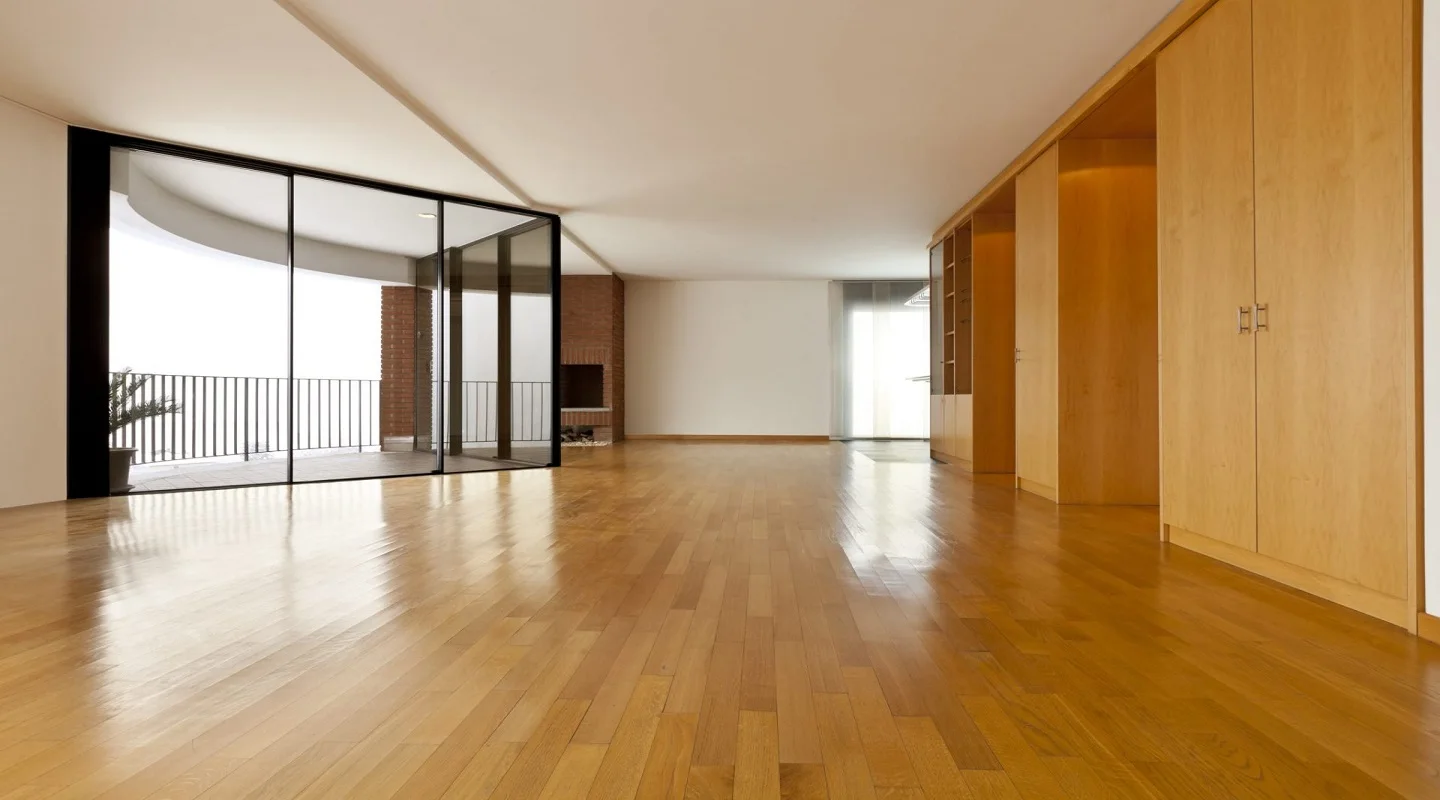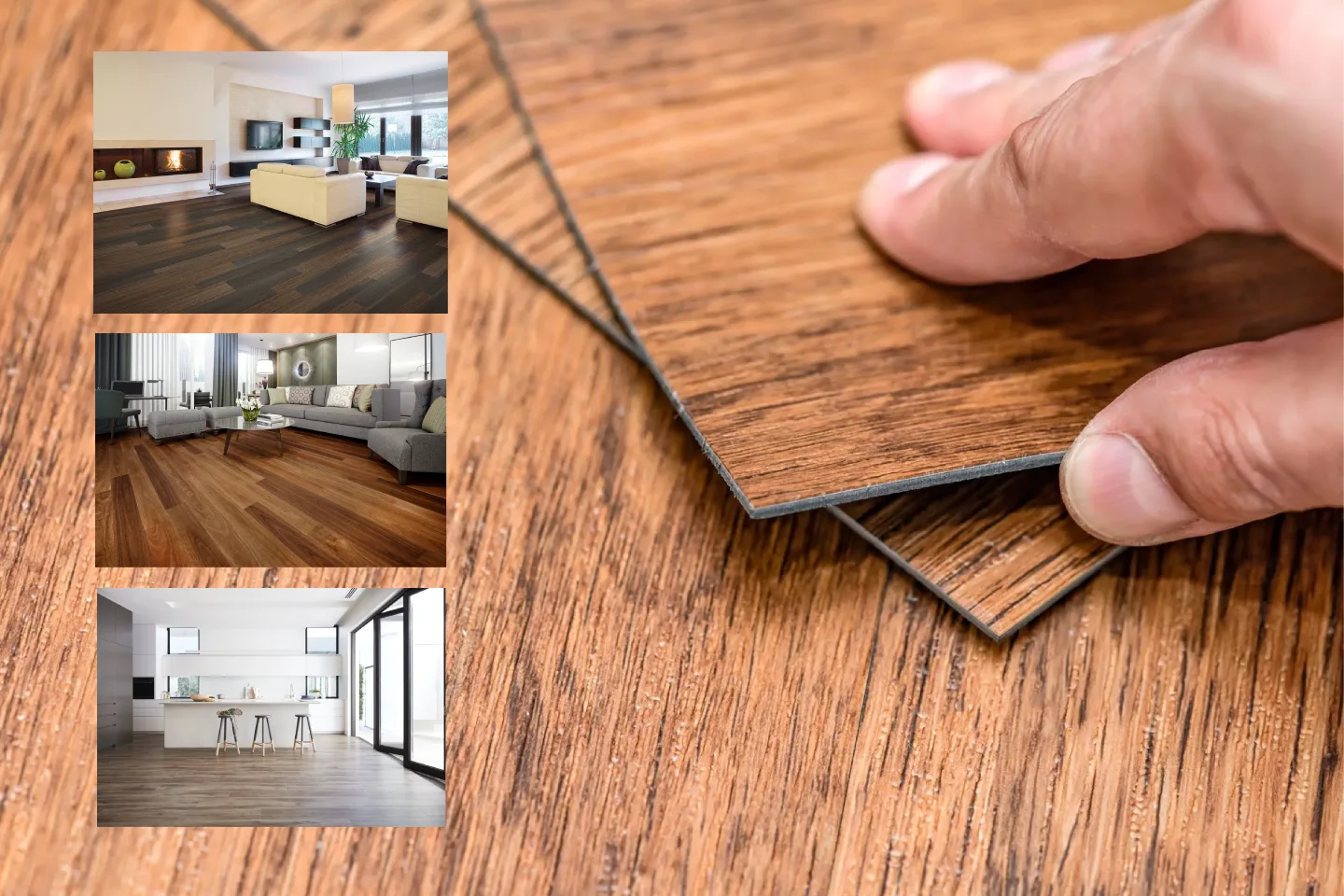What Is Hybrid Flooring? Pros & Cons

Hybrid flooring combines the best features of laminate and vinyl flooring. It typically consists of a multi-layered construction with a rigid core layer made from materials such as limestone or PVC, a printed design layer mimicking the look of wood or stone, and a protective wear layer that provides durability and resistance to scratches and stains.
The Main Advantages of Hybrid Flooring
One of the major benefits of hybrid flooring is its waterproof properties, which make it suitable to use in areas prone to moisture, such as kitchens and bathrooms. It is also known for its dimensional stability, which means it is less likely to expand or contract with changes in temperature and humidity. Additionally, hybrid flooring is often easy to install, with many options featuring a click-lock system that allows for floating installation without the need for adhesives.
Hybrid flooring is a type of flooring that is made by combining the features of laminate and vinyl. Hybrid flooring consists of two types of flooring:
- Rigid Core Hybrid Flooring
- Flexible Core Hybrid Flooring

Problems With Hybrid Flooring
Although hybrid flooring is highly durable, it has some disadvantages like any other material. The main downside to hybrid flooring is the discoloration. When exposed to sunlight after a while these flooring might get discolored so you need to make sure you use curtains or drapes to protect them. Also, make sure to take care of them when you are moving the furniture around. It is true that they are durable and scratch-resistant but if you’re not careful you might end up getting some dents .
Rigid Core Hybrid Flooring

This type of flooring consists of a hard central layer combined with a covering of several layers of PVC (polyvinyl chloride). Due to its hardness and high resistance, this type of flooring is suitable for high-traffic areas such as entrances, hallways, and other public places. It can be installed without the need for glue using a system called “click-lock”.
Subsectors Used in Rigid Core Hybrid Flooring
Here we are going to discuss the subsectors used in rigid core hybrid flooring:
- Foam Underlayment: This type of underlayment is very suitable for Rigid Core Hybrid Flooring due to its flexibility and insulation against sound and heat.
- Mineral underlayment: This type of underlayment is made of mineral materials such as cement and gypsum and is suitable for sound control and subfloor protection.
- Coated underlayment: This type of underlayment has a coating made of PVC film and is suitable for Rigid Core Hybrid Flooring with waterproof coating.
- Metal underlayment: This type of underlayment is made of metal and is suitable for sound control and subfloor protection.
- Wood underlayment: This type of underlayment is made of wood and is suitable for Rigid Core Hybrid Flooring with wood coating.
Tip: Read more about different types of floor materials and their qualities.
Flexible Core Hybrid Flooring
This type of flooring consists of a central layer of hard foam combined with a covering of PVC or polyurethane (PU). Due to its greater flexibility, this type of flooring is suitable for areas such as kitchens, bathrooms, and other areas with more traffic. It can be installed in two ways: by gluing it to the subfloor or by floating installation using a click-lock system.

Substructure for Flexible Core Hybrid Flooring
Here we are going to discuss the subsectors used in flexible core hybrid flooring:
- Foam underlayment: This type of underlayment is suitable for Flexible Core Hybrid Flooring due to its flexibility and insulation against sound and heat.
- Cork underlayment: This type of underlayment is made of cork and is suitable for sound control and subfloor protection.
- Rubber underlayment: This type of underlayment is made of rubber and is suitable for sound control and subfloor protection.
- Felt underlayment: This type of underlayment is made of felt material and is suitable for sound control and subfloor protection.
- Combination underlayment: This underlayment combines different materials and is suitable for sound control, subfloor protection, and moisture resistance.
When installing Hybrid Flooring, it is better to have it done by an experienced and skilled installer. Improper installation can seriously affect the final quality of the flooring. Most installers use the floating installation method with a click-lock system to install Hybrid Flooring, which does not require glue under the flooring. This installation method is quick and easy and allows you to quickly return to your normal life.
Tip: What are the advantages of 3d flooring?
Common underlay options for hybrid flooring:
There are several popular underlayment options for hybrid flooring, including:
- Foam underlayment: This type of underlayment is flexible and provides insulation against sound and heat.
- Cork underlayment: Made of cork, this type of underlayment is suitable for sound control and subfloor protection.
- Rubber underlayment: Made of rubber, this type of underlayment is also suitable for sound control and subfloor protection.
- Felt underlayment: This type of underlayment is made of felt material suitable for sound control and subfloor protection.
- Combination underlayment: This underlayment combines different materials and is suitable for sound control, subfloor protection, and moisture resistance.
The underlayment chosen will depend on factors such as the type of hybrid flooring installed, the level of sound insulation required, and the subfloor conditions. Choosing the right underlayment can increase the lifespan of the flooring and reduce noise and vibrations in the subfloor.
Tip: What are the advantages and disadvantages of resin flooring?
Special infrastructure for hybrid flooring in high-traffic areas
For high-traffic areas, a suitable underlayment for hybrid flooring would provide good sound insulation and subfloor protection. One option that fits these criteria is a rubber underlayment. Rubber underlayment is made of durable and resilient material that helps to reduce sound transmission and provides cushioning support for the flooring. It also helps to protect the subfloor from wear and tear caused by daily foot traffic.

Another option that could work well is a combination underlayment that includes a layer of rubber or cork for sound insulation and a layer of vapor barrier for moisture resistance. This underlayment can provide additional protection against moisture issues and sound transmission, making it a good choice for high-traffic areas.
Ultimately, the best underlayment for hybrid flooring in a high-traffic area will depend on the specific needs of the installation. It’s always best to consult a flooring professional to determine the best underlayment option.
Conclusion
Hybrid flooring combines the best features of laminate and vinyl flooring, so we call it a hybrid. It is a multi-layered construction with a rigid core, printed design, and protective wear layer. Hybrid flooring is waterproof and dimensionally stable, making it suitable for high-traffic areas. Two main types are Rigid and Flexible Core, with different underlayment options. Proper installation is crucial; floating installation with a click-lock system is popular.



Did you find what you were looking for?